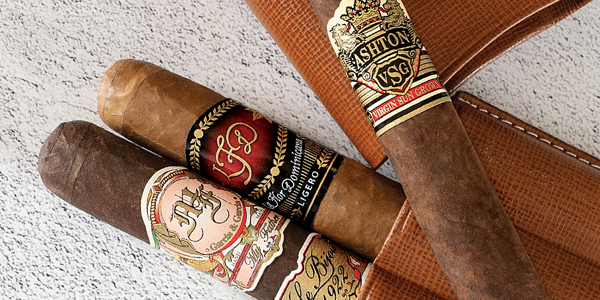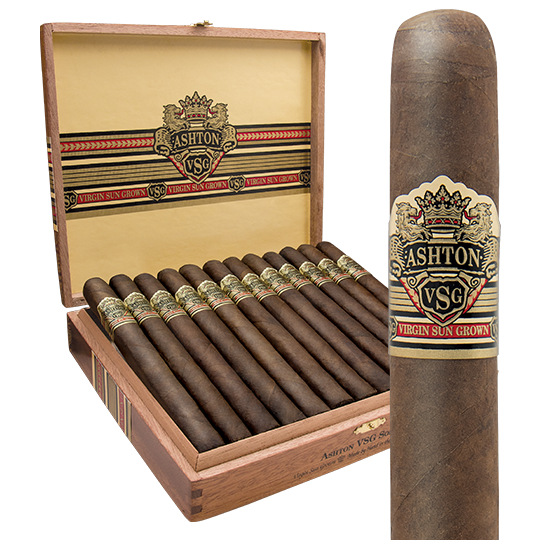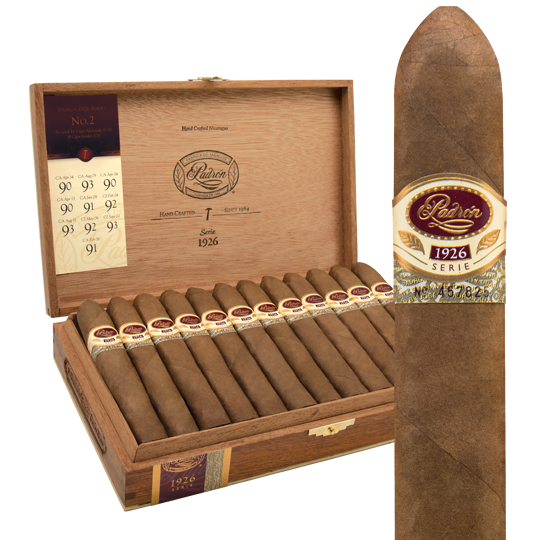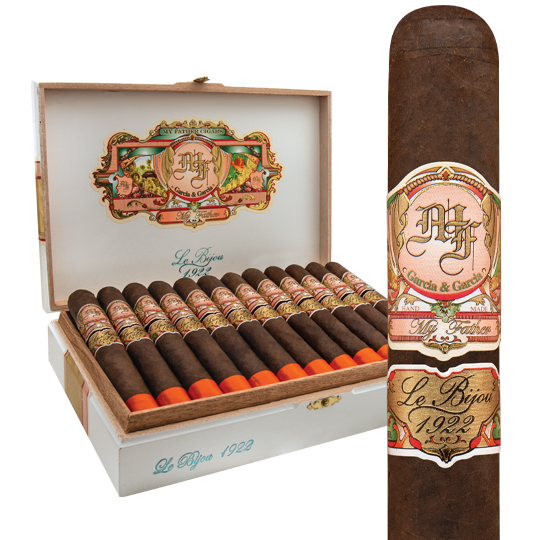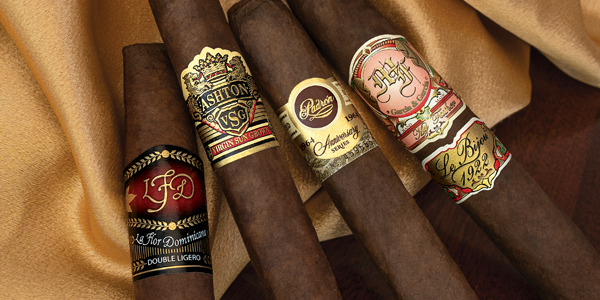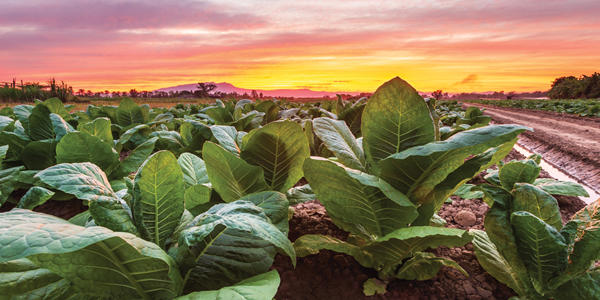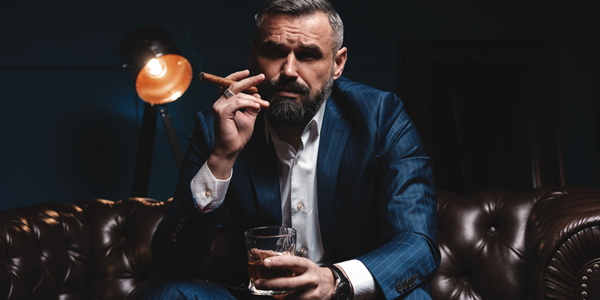Are Cigars Stronger Today than 20 Years Ago?
Are cigars stronger today than 20 years ago? Yes! No? Compared to what? What immediately comes to mind for me is the evolution of the La Flor Dominicana brand.
Before the Double Ligero
When Litto Gomez, the owner of La Flor Dominicana, entered the cigar business in 1994, he wasn’t a big cigar smoker. The company he signed on with in the Dominican Republic made Los Libertadores cigars. The band featured José Marti and Máximo Gómez, two Cuban revolutionaries who had fought against Spain. The Los Libertadores cigars featured mostly Connecticut Shade wrappers around Dominican filler. I used to smoke the Robusto, 5 x 48, released in 1994. Blended by Gomez, this was not a strong cigar, but it had great complexity, with prominent spices, oak and chocolate notes, but mostly it was creamy and maybe a little sweet, if I recall.
Today, Litto Gomez owns the company, and La Flor Dominicana is known for expert blending and some very strong cigars. That’s a result of Litto’s own preferences and his refinement of the blends that go to the market. Did the stronger cigars, like the La Flor Dominicana Ligero Oscuro, define the market or follow it? Hard to say, but Litto has become known for, as he has said, putting “a little extra ligero in there.” He has since added even more ligero – the strongest leaf on the tobacco plant coming from the top – to other lines. A lot of other cigar-makers have added ligero as well, seeking to add flavor and strength to their blends. That’s not to say that La Flor Dominicana is all about power. The Coronado line is fairly strong, but beautifully balanced. Litto remains one of the top blenders in the business.
Defining Tastes
Today, I can’t find the Los Libertadores and I’m not sure I would buy it if I could, but it was a solid example of what a lot of cigars were like 20 or more years ago. Macanudo was a huge seller back then. Those cigars had classic shade wrappers on them and defined elegance. You could not legally obtain Cuban cigars in the US or even bring them back from Cuba in any large quantities.
I remember that I smoked a lot of Ashton and Padrón in the 1990s. Arturo Fuente cigars, especially the Don Carlos line, were also in the mix. All of these cigars had great flavor and construction and different wrappers that began to diversify my taste. I also smoked a good number of Cuban cigars that I had obtained on visits to the island. My favorite at the time was the Punch Punch, 5.625 x 46, a shape that was known as a Cetro, in some quarters. I still like it, though its quality and construction have been subjected to the Cuban roller coaster of quality control. None of these cigars were exactly what I would call strong, but they were all flavorful. Cuban cigars, even to this day, with notable exceptions, are very similar to one another in terms of strength.
Turning Point?
On a vacation to the Dominican Republic in the late 1990s, I visited Santiago, the country’s cigar capital. I spent time with Robert Levin of Ashton, Carlito Fuente of Arturo Fuente, and Litto Gomez. After some of the most enjoyable dinners ever, I was treated to cigars made by each that were not for the market and they were all much fuller than what was available in stores. Cigar-makers smoke a lot more than the average cigar smoker and, as a result, their palates craved more robust smokes. Some of the cigars that were given to me then, and over the years, have occasionally knocked me on my butt.
Of course, very significantly, the Fuente Fuente Opus X debuted in 1995, after years in the making. Carlito had worked on the blend and developing the soil with the intention of making the first really high-quality Dominican puro ever. A puro is a cigar made of tobaccos from one country. The Opus X also had a shade-grown wrapper, but is, as Cigar Aficionado first reviewed it, “full of power and character.” The Opus X was in huge demand even before its very limited release. And, in not just my opinion, it redefined what a cigar was and what cigar-lovers wanted to smoke.
Tastes Broaden
Perhaps the better way to address the question as to whether cigars have become stronger in the last couple of decades is to explore whether tastes have changed. The short answer is yes. Still, cigars of every strength are available, but it’s clear that stronger ones have become far more popular, in part because they are not just about brute power. Ashton has had the VSG (Virgin Sun Grown) since 1999, made by the Fuente factory, with an Ecuador Sumatra wrapper that is full-bodied, while retaining complex spices, earthiness, and notes of cedar and leather. The VSG is a super popular line and distinct from the classic Ashton line. Cain, made by Oliva, is known for its strong flavor profile, especially, the Cain Habano, a Nicaraguan cigar full of ligero that delivers a lot of pepper. Padrón, since its origins in 1964, has amplified its offerings and power with, among others, the 1926 Series, which is full of rich, earthy spices, leather, nuts, and cocoa.
Award-winning father-and-son cigar-makers Jose ‘Pepin’ Garcia and Jaime Garcia have naturally met the demand for stronger cigars. They are the blenders behind several acclaimed brands, including My Father, La Aroma de Cuba, and Tatuaje. They’re also no strangers to high marks from the critics with the ultra-bold 97-rated My Father Le Bijou 1922, 96-rated Flor de las Antillas, and 95-rated La Aroma de Cuba Mi Amor – all previously ranked at the top of Cigar Aficionado’s annual ‘Top 25 Cigars of the Year.’
Even Davidoff, traditionally known for remarkably refined cigars, has amped up the flavor profile with its full and intense Nicaragua blend, and Yamasa, a medium-bodied cigar. Taste them along with a traditional Davidoff and you’ll see how the blending has evolved.
The Long Answer
When someone starts smoking cigars, they’ll generally start with something relatively mild. As they become more experienced, they crave more complexity and power. It’s clear that Cigar Aficionado magazine had a hand in promoting that. As the Cigar Boom came to its peak in 1997, cigars wrapped in Connecticut Shade began to take a back seat to ones wrapped in a lot of different varietals. The Padrón 1964 Anniversary Series and the emergence of Nicaraguan cigars did a lot to introduce smokers to richer, fuller-flavored cigars. Padrón has won the magazine’s ‘Cigar of the Year’ award three times and placed in the ‘Top 10’ every year – stats that have helped make stronger cigars much more popular. The launch of the La Flor Dominicana Double Ligero line in 2003 contributed to the appeal of stronger cigars. At the time, that cigar was a beast in terms of boldness, becoming the company’s most popular line.
As cigar smokers become more experienced, they seek variety. Tastes change, it seems, as smokers get older. Their palates evolve. The great thing is that today cigar lovers have as much choice as they’ve ever had when it comes to smoking a mild or strong cigar. Fortunately, cigar makers have gotten even better at making cigars of every strength and without abandoning great flavor.

